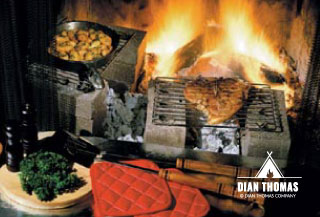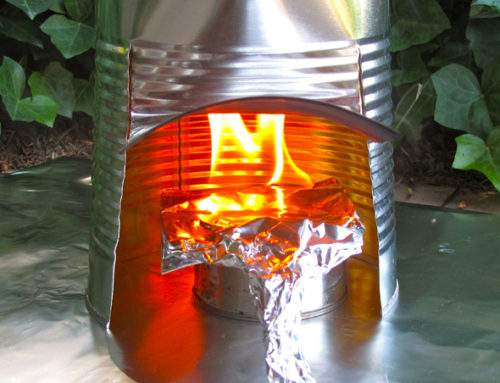Mealtime can draw a family together with fun and adventure. In these days of dizzy-paced living, dinner is often the only time family members see each other. With a little creativity and imagination, family members can make mealtime a time of laughter, closeness, and good memories. These following twists can help make dinner a highlight of the day for parents and children who enjoy the out-of-the-ordinary.
- Backwards Dinner. Try eating dinner backwards. Start with dessert, then work back to the salad or hors d’oeuvres. You may want to add other touches. Right-handed family members may need to eat left-handed; some may even want to put clothes on backwards for the meal.
- Dollar Dinner. The dollar dinner involves the whole family in planning, and cooking, and is a fun way to help teach the value of money as well. At the grocery store, give each member of the family one dollar (or another predetermined amount). Each person uses his/her money to buy one food item for dinner for the entire family. Parents will want to set some limits: no junk food or candy, a time limit for shopping, and another for preparing the food. Each family member must prepare what he/she buys.
- Good Sports Meal. Try a creative approach to serving leftovers. Clean out leftovers from prior meals, heat up those served warm, then dish each onto a separate plate. Assign each leftover a number. Family members draw corresponding numbers to determine who eats what.
- Blackboard or Sunday Dinner. If your children are old enough to learn to cook, you’ll enjoy this novel way to involve everyone in meal preparation (which can help free parents). Outline the meal on a blackboard, listing enough individual food preparation chores for the entire family. The early bird gets the best assignment. As family members get up in the morning, each can sign up for the assignment of his/her choice. As a variation, family members could draw assignments from a hat or bowl.
- Family Member of the Week. You might wish to take time to honor each member of the family. Assign each member a special week (perhaps the week of a birthday, graduation, or other important day). Let that person choose the menus for the week. Excuse the honored family member from cooking and cleanup chores. Display that person’s picture, and then have each family member write a letter of appreciation to the honored person.
- International Meal. A meal with an international theme can be fun and educational, too. A week or two before the planned meal, the family chooses a particular country. Various family members use encyclopedias, school and library resources to find recipes for foods native to the country, interesting facts or stories about the country, and colorful decorations (small flags on, name-tags or native flowers, perhaps) centered around the country. You may want to invite someone from that country to visit your home to share their knowledge.
- Heritage Meal. To celebrate pioneer day, or to focus family home evening on your family’s ethnic heritage, plan your menu around your grandmother’s favorite childhood foods, or foods your ancestors may have eaten. If you are particularly adventurous, cook the foods over an open fire (or barbeque) outdoors, or cook in your fireplace. (Be sure to take proper precautions.)
- Exchange Meal. The exchange meal can provide a novel way to get to know another family. Each family fixes its favorite main dish, salad and dessert. The families meet for dinner at one home, and then exchange meals. A summertime variation: Each family fixes a favorite meal, then the two families exchange meals at a nearby park or picnic spot.
- Holiday Meals. Families really enjoy creative holiday meals. One family celebrates Christmas meals by setting the table with a special set of red dishes used only on that day. St. Patrick’s Day dinner will be more fun if you serve only green foods (stuffed green peppers, a green salad, a lime gelatin salad, peas or green beans, with mint or lime ice cream for dessert). April First presents opportunities for family foolishness. Color foods different wild colors, such as purple mashed potatoes or blue milk. Serve breakfast foods for dinner and dinner foods for breakfast. Use your imagination for other fun.
- Celebrity Meal. Choose a famous person to set the theme for your meal. Serve foods that person is known to like, or if the person is historical, foods he or she may have eaten. For instance, to honor Beethoven, serve traditional German foods, and play his music as background; a Peter Vidmar meal might feature training table foods.
- Fun on the Road. When you have packed a lunch to eat while you’re traveling, use your imagination to make the meal an enjoyable family activity. As you pack the lunch, staple on each food a card with the condition that must be met before the person can eat that item. For instance, before you eat the sandwiches, the child must count twenty-five cows. Then to get the carrot sticks, he or she must see five green cars.
- Meals for Teaching Tots. You can make mealtime an educational experience for your tot. To teach colors, make meals featuring only foods of one particular color. For orange, for instance, you might serve orange juice or orange slices, orange cheese, carrot sticks. and orange cupcakes. To teach shapes, serve food cut in one shape. For squares, for instance, serve square sandwiches, a square Jell-o salad, and a square piece of apple.




